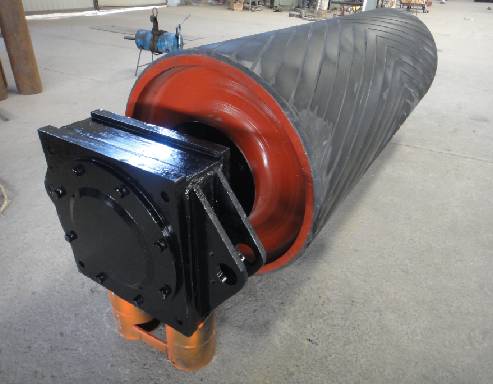 Afrikaans
Afrikaans  Albanian
Albanian  Amharic
Amharic  Arabic
Arabic  Armenian
Armenian  Azerbaijani
Azerbaijani  Basque
Basque  Belarusian
Belarusian  Bengali
Bengali  Bosnian
Bosnian  Bulgarian
Bulgarian  Catalan
Catalan  Cebuano
Cebuano  Corsican
Corsican  Croatian
Croatian  Czech
Czech  Danish
Danish  Dutch
Dutch  English
English  Esperanto
Esperanto  Estonian
Estonian  Finnish
Finnish  French
French  Frisian
Frisian  Galician
Galician  Georgian
Georgian  German
German  Greek
Greek  Gujarati
Gujarati  Haitian Creole
Haitian Creole  hausa
hausa  hawaiian
hawaiian  Hebrew
Hebrew  Hindi
Hindi  Miao
Miao  Hungarian
Hungarian  Icelandic
Icelandic  igbo
igbo  Indonesian
Indonesian  irish
irish  Italian
Italian  Japanese
Japanese  Javanese
Javanese  Kannada
Kannada  kazakh
kazakh  Khmer
Khmer  Rwandese
Rwandese  Korean
Korean  Kurdish
Kurdish  Kyrgyz
Kyrgyz  Lao
Lao  Latin
Latin  Latvian
Latvian  Lithuanian
Lithuanian  Luxembourgish
Luxembourgish  Macedonian
Macedonian  Malgashi
Malgashi  Malay
Malay  Malayalam
Malayalam  Maltese
Maltese  Maori
Maori  Marathi
Marathi  Mongolian
Mongolian  Myanmar
Myanmar  Nepali
Nepali  Norwegian
Norwegian  Norwegian
Norwegian  Occitan
Occitan  Pashto
Pashto  Persian
Persian  Polish
Polish  Portuguese
Portuguese  Punjabi
Punjabi  Romanian
Romanian  Russian
Russian  Samoan
Samoan  Scottish Gaelic
Scottish Gaelic  Serbian
Serbian  Sesotho
Sesotho  Shona
Shona  Sindhi
Sindhi  Sinhala
Sinhala  Slovak
Slovak  Slovenian
Slovenian  Somali
Somali  Spanish
Spanish  Sundanese
Sundanese  Swahili
Swahili  Swedish
Swedish  Tagalog
Tagalog  Tajik
Tajik  Tamil
Tamil  Tatar
Tatar  Telugu
Telugu  Thai
Thai  Turkish
Turkish  Turkmen
Turkmen  Ukrainian
Ukrainian  Urdu
Urdu  Uighur
Uighur  Uzbek
Uzbek  Vietnamese
Vietnamese  Welsh
Welsh  Bantu
Bantu  Yiddish
Yiddish  Yoruba
Yoruba  Zulu
Zulu Optimizing Conveyor Belt Drive Rollers for Enhanced Performance and Efficiency
Understanding Conveyor Belt Drive Rollers Critical Components for Efficient Material Handling
Conveyor systems have become integral to modern industrial processes, serving various sectors such as manufacturing, logistics, and distribution. Among the essential components of these systems are conveyor belt drive rollers, which play a critical role in ensuring efficient movement of materials. This article explores the functionality, types, and importance of drive rollers in conveyor systems.
What are Conveyor Belt Drive Rollers?
Conveyor belt drive rollers, often referred to as drive drums or drive pulleys, are cylindrical components that facilitate the motion of conveyor belts. Positioned at the terminus of the conveyor, these rollers are mechanically linked to the drive motor. As the motor turns the drive roller, it imparts movement to the conveyor belt, allowing materials to be transported along the desired path.
Drive rollers are typically made from robust materials such as steel or aluminum, constructed to withstand the immense forces and wear associated with transporting heavy loads. They may be coated with rubber or other materials to enhance traction and prevent slippage, ensuring the conveyor operates smoothly and efficiently.
Types of Drive Rollers
1. Standard Drive Rollers These are the most common type and are typically cylindrical in shape. They provide a solid grip on the conveyor belt and allow for an efficient transfer of power from the motor.
2. Lagged Drive Rollers These rollers are covered with a layer of rubber or other materials. They enhance friction between the roller and the belt, minimizing slippage and increasing the overall efficiency of the conveyor system.
conveyor belt drive rollers

4. Variable Speed Drive Rollers Equipped with advanced motor controls, these rollers can change speed based on application requirements. This versatility makes them ideal for systems where load and material characteristics frequently change.
Importance of Drive Rollers in Conveyor Systems
1. Power Transmission Drive rollers are crucial for transmitting power from the motor to the conveyor belt, making them indispensable for system functionality. Without them, the material handling process would come to a halt.
2. Load Distribution Properly designed drive rollers distribute the weight of the transported materials evenly across the conveyor system. This distribution helps prevent excessive wear and extends the lifespan of both the conveyor and its components.
3. Efficiency and Speed Control The type of drive roller selected can significantly impact the efficiency and speed of a conveyor system. Adjusting the size and surface material of the rollers can optimize performance for different applications, ensuring that the system operates at its best.
4. Maintenance and Durability High-quality drive rollers are designed for durability and ease of maintenance. Regular inspection and timely replacement of worn drive rollers can prevent unexpected breakdowns and minimize operational downtime.
Conclusion
In conclusion, conveyor belt drive rollers are vital components that contribute significantly to the effectiveness of conveyor systems. Their ability to transmit power, distribute loads, and enhance efficiency plays a crucial role in the seamless movement of materials in various industries. As technology continues to advance, the design and functionality of these drive rollers are likely to evolve, offering even greater performance and reliability. Investing in quality drive rollers and ensuring regular maintenance can lead to longer equipment life and improved operational efficiency, making them essential for any material handling operation.
As industries continue to expand and the need for efficient material handling systems grows, understanding the functions and benefits of conveyor belt drive rollers will remain essential for engineers and operators alike.
-
Revolutionizing Conveyor Reliability with Advanced Rubber Lagging PulleysNewsJul.22,2025
-
Powering Precision and Durability with Expert Manufacturers of Conveyor ComponentsNewsJul.22,2025
-
Optimizing Conveyor Systems with Advanced Conveyor AccessoriesNewsJul.22,2025
-
Maximize Conveyor Efficiency with Quality Conveyor Idler PulleysNewsJul.22,2025
-
Future-Proof Your Conveyor System with High-Performance Polyurethane RollerNewsJul.22,2025
-
Driving Efficiency Forward with Quality Idlers and RollersNewsJul.22,2025





























